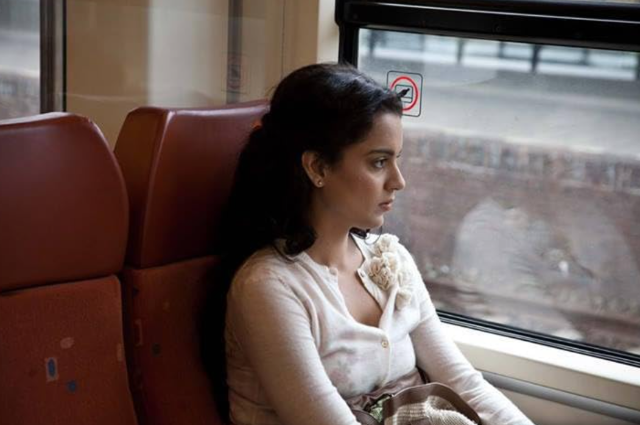Cinema and film are prevalent forms of mass communication that significantly influence opinions, shape perceptions, and reinforce prevailing cultural norms. They entertain audiences globally, offering an escape from everyday life by creating an alternate reality. Additionally, cinema has the power to alter individuals' mindsets and help establish new cultural, social, and political values. Indian cinema has long been a significant part of Indian culture, impacting society and individual lives in various ways. Movies influence people's fashion choices, speech, and social behaviour, both directly and indirectly. Over time, Indian cinema has evolved from traditional mythological films to "Bollywoodized" adaptations of successful Hollywood movies. In the 1970s, Indian cinema began to adopt a more socially conscious and politically focused approach.
The portrayal of women in cinema reflects their image, status, and role in society, particularly in Indian films, which have depicted these themes since their inception. Many films draw inspiration from religion and mythology, showcasing female characters as paragons of virtue and values, emphasizing loyalty and obedience to their husbands. Hindi cinema has effectively reinforced patriarchal norms through films such as Dahej (1950), Devi (1970), Pati Parmeshwar (1988), and Gauri (1968), which present women as passive, submissive wives and martyrs for their families. Research indicates that the representation of women in films was a significant concern during the 1960s and 1970s, highlighting criticism of their roles and images within the film industry.
The portrayal of women in Contemporary cinema
Contemporary Indian cinema refers to the filmmaking landscape in India from the late 20th century to the present. It showcases the social, cultural, and technological progress made during this time. Renowned for its diversity, Indian cinema includes films in various languages such as Hindi, Tamil, Telugu, Bengali, and Malayalam. In recent years, there has been a notable change in how women are depicted and the roles they occupy in these films. A recent analysis of popular Indian films from the 1940s to the 2000s reveals that while the portrayal of women as mothers, daughters, wives, and daughters-in-law has remained largely consistent, there are two notable shifts. Firstly, the representation of the 'other woman,' often depicted as a dancing courtesan, has evolved. Secondly, there is an increasing number of women depicted in professional roles and careers. Unlike the women of the 1940s and 1950s, who often relied on men, contemporary female characters are portrayed as independent and self-sufficient. This reflects a broader societal change, as more women are entering professions previously inaccessible to them, such as airline pilots, investigative reporters, police officers, business owners, and attorneys. As Indian society becomes more liberal regarding dating, premarital sex, and gender equality, modern films are increasingly featuring women as central characters rather than merely supporting roles. However, in recent years, Indian cinema has started to showcase a wider range of diverse and prominent portrayals of women. In the 21st century, actresses such as Kangana Ranaut, Priyanka Chopra, Vidya Balan, Rituparna Sengupta, and Anushka Shetty have embraced roles that confront traditional stereotypes within the industry.
Analyzing the psychological perspective behind the shift
Psychologist Albert Bandura stated that people learn behaviours by watching those around them. The way women are portrayed in film can influence societal views on gender roles and contribute to changing attitudes. The societal acceptance of female-centric roles in cinema is evolving. India, known for its rich cultural diversity, is witnessing a shift in the portrayal of women as symbols of strength in media and films, which contributes to altering the country's cultural narrative. Recent commercial films have faced criticism for portraying male protagonists who engage in inappropriate behaviours like eve-teasing, harassment, stalking, making sexually suggestive remarks, unwanted physical contact, and attempts to undress women. In these Indian movies, even when a female character repeatedly rejects advances, the male lead continues to pursue her until she eventually gives in. While this portrayal is problematic and does not serve as a positive example for either gender, it also reflects the historical depiction of how men traditionally courted women in classical literature.
Personal identity and self-concept are significantly influenced by personal development and introspection. Media, particularly film, is crucial in shaping an individual's self-perception. Movies such as "Piku," "Queen," "Mardani," and "Neerja," which showcase strong and independent female leads tackling diverse themes and issues, help foster a greater sense of self-worth and empowerment for women. The representation of women in Indian cinema has evolved, with the 21st century witnessing an increase in female filmmakers and writers. As a result, more content is being produced that offers a new perspective on the changing lives of women. Although advancements have been made and the audience has generally become more open to change, it is crucial to recognize and address ongoing issues such as pay parity that continue to exist in the industry.
The pay gap remains significant, affecting many female actors. The rise of streaming platforms such as Netflix and Amazon Prime has created new opportunities for unconventional themes, which will ultimately transform the revenue models within the film industry. Indian cinema is currently experiencing an exciting era, particularly for women in the industry!
. . .
References:

